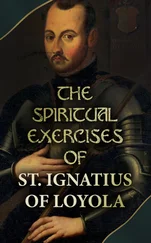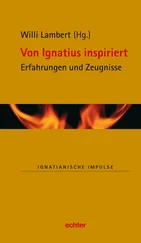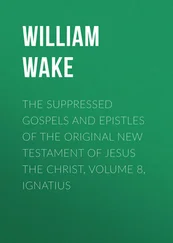Ignatius Donnelly - Antediluvian world
Здесь есть возможность читать онлайн «Ignatius Donnelly - Antediluvian world» весь текст электронной книги совершенно бесплатно (целиком полную версию без сокращений). В некоторых случаях можно слушать аудио, скачать через торрент в формате fb2 и присутствует краткое содержание. Жанр: Старинная литература, на русском языке. Описание произведения, (предисловие) а так же отзывы посетителей доступны на портале библиотеки ЛибКат.
- Название:Antediluvian world
- Автор:
- Жанр:
- Год:неизвестен
- ISBN:нет данных
- Рейтинг книги:5 / 5. Голосов: 1
-
Избранное:Добавить в избранное
- Отзывы:
-
Ваша оценка:
- 100
- 1
- 2
- 3
- 4
- 5
Antediluvian world: краткое содержание, описание и аннотация
Предлагаем к чтению аннотацию, описание, краткое содержание или предисловие (зависит от того, что написал сам автор книги «Antediluvian world»). Если вы не нашли необходимую информацию о книге — напишите в комментариях, мы постараемся отыскать её.
Antediluvian world — читать онлайн бесплатно полную книгу (весь текст) целиком
Ниже представлен текст книги, разбитый по страницам. Система сохранения места последней прочитанной страницы, позволяет с удобством читать онлайн бесплатно книгу «Antediluvian world», без необходимости каждый раз заново искать на чём Вы остановились. Поставьте закладку, и сможете в любой момент перейти на страницу, на которой закончили чтение.
Интервал:
Закладка:
The letters, then, which we owe to the Phoenicians, are A, B, C, D, E, H, I, K, L, M, N, O, P, Q, R, S, T, Z. If we are to trace out resemblances with the alphabet of any other country, it must be with these signs.
Is there any other country to which we can turn which possessed a phonetic alphabet in any respect kindred to this Phoenician alphabet? It cannot be the Chinese alphabet, which has more signs than words; it cannot be the cuneiform alphabet of Assyria, with its seven hundred arrow-shaped characters, none of which bear the slightest affinity to the Phoenician letters.
It is a surprising fact that we find in Central America a phonetic alphabet. This is in the alphabet of the Mayas, the ancient people of the peninsula of Yucatan, who claim that their civilization came to them across the sea in ships from the east, that is, from the direction of Atlantis. The Mayas succeeded to the Colhuas, whose era terminated one thousand years before the time of Christ; from them they received their alphabet. It has come to us through Bishop Landa, one of the early missionary bishops, who confesses to having burnt a great number of Maya books because they contained nothing but the works of the devil. He fortunately, however, preserved for posterity the alphabet of this people. We present it herewith.
###
LANDA’S
ALPHABET
(From “North Amer. of Antiquity,” p. 434.) Diego de Landa was the first bishop of Yucatan. He wrote a history of the Mayas and their country, which was preserved in manuscript at Madrid in the library of the Royal Academy of History. . . . It contains a description and explanation of the phonetic alphabet of the Mayas.
Landa’s manuscript seems to have lain neglected in the library, for little or nothing was heard of it until it was discovered by the French priest Brasseur de Bourbourg, who, by means of it, has deciphered some of the old American writings. He says, ‘the alphabet and signs explained by Landa have been to me a Rosetta stone.’” (Baldwin’s “Ancient America,” p. 191.)
When we observe, in the table of alphabets of different European nations which I give herewith, how greatly the forms of the Phoenician letters have been modified, it would surprise us to find any resemblance between the Maya alphabet of two or three centuries since and the ancient European forms. It must, however, be remembered that the Mayas are one of the most conservative peoples in the world. They still adhere with striking pertinacity to the language they spoke when Columbus landed on San Salvador; and it is believed that that language is the same as the one inscribed on the most ancient monuments of their country. Senor Pimental says of them, “The Indians have preserved this idiom with such tenacity that they will speak no other; it is necessary for the whites to address them in their own language to communicate with them.” It is therefore probable, as their alphabet did not pass from nation to nation, as did the Phoenician, that it has not departed so widely from the original forms received from the Colhuas.
### The Alphabet But when we consider the vast extent of time which has elapsed, and the fact that we are probably without the intermediate stages of the alphabet which preceded the archaic Phoenician, it will be astonishing if we find resemblances between any of the Maya letters and the European forms, even though we concede that they are related. If we find decided affinities between two or three letters, we may reasonably presume that similar coincidences existed as to many others which have disappeared under the attrition of centuries.
The first thought that occurs to us on examining the Landa alphabet is the complex and ornate character of the letters. Instead of the two or three strokes with which we indicate a sign for a sound, we have here rude pictures of objects. And we find that these are themselves simplifications of older forms of a still more complex character. Take, for instance, the letter pp in Landa’s alphabet, ### : here are evidently the traces of a face. The same appear, but not so plainly, in the sign for x, which is ### . Now, if we turn to the ancient hieroglyphics upon the monuments of Central America, we will find the human face appearing in a great many of them, as in the following, which we copy from the Tablet of the Cross at Palenque. We take the hieroglyphs from the left-hand side of the inscription. Here it will be seen that, out of seven hieroglyphical figures, six contain human faces.
And we find that in the whole inscription of the Tablet of the Cross there are 33 figures out of 108 that are made up in part of the human countenance.
###
We can see, therefore, in the Landa alphabet a tendency to simplification. And this is what we would naturally expect. When the emblems—which were probably first intended for religious inscriptions, where they could be slowly and carefully elaborated—were placed in the hands of a busy, active, commercial people, such as were the Atlanteans, and afterward the Phoenicians, men with whom time was valuable, the natural tendency would be to simplify and condense them; and when the original meaning of the picture was lost, they would naturally slur it, as we find in the letters pp and x of the Maya alphabet, where the figure of the human face remains only in rude lines.
The same tendency is plainly shown in the two forms of the letter h, as given in Landa’s alphabet; the original form is more elaborate than the variation of it. The original form is ### The variation is given as ###
. Now let us suppose this simplification to be carried a step farther: we have seen the upper and lower parts of the first form shrink into a smaller and less elaborate shape; let us imagine that the same tendency does away with them altogether; we would then have the letter H of the Maya alphabet represented by this figure, ### ; now, as it takes less time to make a single stroke than a double one, this would become in time ### . We turn now to the archaic Greek and the old Hebrew, and we find the letter h indicated by this sign, ### , precisely the Maya letter h simplified. We turn to the archaic Hebrew, and we find ### .
Now it is known that the Phoenicians wrote from right to left, and just as we in writing from left to right slope our letters to the right, so did the Phoenicians slope their letters to the left. Hence the Maya sign becomes in the archaic Phoenician this, ### . In some of the Phoenician alphabets we even find the letter h made with the double strokes above and below, as in the Maya h. The Egyptian hieroglyph for h is ### while ch is ### . In time the Greeks carried the work of simplification still farther, and eliminated the top lines, as we have supposed the Atlanteans to have eliminated the double strokes, and they left the letter as it has come down to us, H.
Now it may be said that all this is coincidence. If it is, it is certainly remarkable. But let us go a step farther: We have seen in Landa’s alphabet that there are two forms of the letter m. The first is ### . But we find also an m combined with the letter o, a, or e, says Landa, in this form, ### . The m here is certainly indicated by the central part of this combination, the figure ### ; where does that come from? It is clearly taken from the heart of the original figure wherein it appears. What does this prove? That the Atlanteans, or Mayas, when they sought to simplify their letters and combine them with others, took from the centre of the ornate hieroglyphical figure some characteristic mark with which they represented the whole figure. Now let us apply this rule: We have seen in the table of alphabets that in every language, from our own day to the time of the Phoenicians, o has been represented by a circle or a circle within a circle. Now where did the Phoenicians get it? Clearly from the Mayas. There are two figures for o in the Maya alphabet; they are ### and ### ; now, if we apply the rule which we have seen to exist in the case of the Maya m to these figures, the essential characteristic found in each is the circle, in the first case pendant from the hieroglyph; in the other, in the centre of the lower part of it. And that this circle was withdrawn from the hieroglyph, and used alone, as in the case of the m, is proved by the very sign used at the foot of Landa’s alphabet, which is, ### Landa calls this ma, me, or mo; it is probably the latter, and in it we have the circle detached from the hieroglyph.
Читать дальшеИнтервал:
Закладка:
Похожие книги на «Antediluvian world»
Представляем Вашему вниманию похожие книги на «Antediluvian world» списком для выбора. Мы отобрали схожую по названию и смыслу литературу в надежде предоставить читателям больше вариантов отыскать новые, интересные, ещё непрочитанные произведения.
Обсуждение, отзывы о книге «Antediluvian world» и просто собственные мнения читателей. Оставьте ваши комментарии, напишите, что Вы думаете о произведении, его смысле или главных героях. Укажите что конкретно понравилось, а что нет, и почему Вы так считаете.












